Knee joint arthrosis combines two processes: cartilage destruction and osteophyte growth or bone spur.The stage of the process is determined by the radiography.Arthrosis is believed to be the destruction of knee joints with age, the natural process of aging.The causes are muscle weakening and bad blood supply to the tissue.How to treat it without surgery?Eliminate factors that reduced muscle tone.
Causes
The causes of arthrosis are not yet determined by medicine,Only risk factors are named:Aging over 45 years, knee injuries and overweight.Almost 50% of the adult population has already complained about the knee articulation.
With arthrosis, the cartilage lining the bones is abrasion or completely absent.Damaged tissue is not a source of pain because it has no receptors.Inflammation in nearby structures causes characteristic symptoms.
The body continues the regeneration of damaged tissues, but the cartilage grows unevenly.As a result, irregularities are formed that impair other elements of the joint.The nature of the osteophytes is explained by compensation for smooth joint cartilage.Another version indicates that the growth of "Spurs"It is associated with an attempt to stabilize the joint medially or lateral due to muscle weakening.
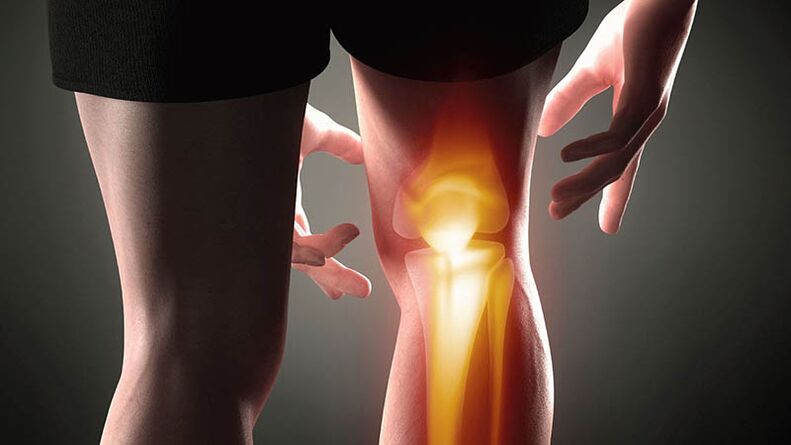
What is the chronic arthrosis of the knee joint?Pain occurs in tendons and ligaments only when muscle forces fail to hold bones and control them.Therefore, the biomechanical causes of pain and arthrosis are distinguished:
- On the backdrop of a long seatThere is a compression between the inguinal ligament and the muscle that runs through the femoral artery and nerve iliac, which weakens the force of the thigh and leads to the appearance of tension in the tendon below the knee glass.
- The long session -applies the glute musclesWeakening them.Instead, the pear -shaped muscles begin to work under which the sciatic nerve passes.During its compression, the double muscle weakens, the angle of the thigh and leg changes.The knee is injured.
- Heel walkingCauses tension of the calf muscles, unfolds to the pelvis, weakens the medium glute muscles.The femoral bone spins inside, the ligaments are charged along the interior of the knee, a medial meniscus, osteophytes grow.
- Smooth feetAssociated with the use of uncomfortable shoes, weakening the main muscles and increased lordosis, unfolds the tibial bone, which leads to knee pain due to the violation of biomechanics, the development of a baker's cyst.
The pathological chains that affect the knee are associated with a drop in the scenario in childhood, scoliosis caused by diseases of the internal organs.People who have a different height of the shoulder,Over time, they start complaining in the knee, since the fascial chains in front of the body include the extender of this joint - the straight thigh muscle.
Symptoms
The degenerative process interrupts joint function, leads to pain and rigidity.It is believed that it isCartilage and bone, the effect on the muscles begins.Practice shows the opposite -Knee joint pain occurs in tendon sites- Flasses of the weakened muscles of extensors, flexors and knee stabilizers.
The main signs of the threat of cartilage wear:
- From time to time, the discomfort associated with the walk, the feeling of "not so defined the leg."
- The appearance of pain with a direct load in the joint and muscles, folding -a and extending -a -crouching, climb the stairs.
- Knee pain and stiffness after prolonged inaction or rest, for example, when leaving the bed in the morning, which is associated with venous blood stagnation.
The main signs of arthrosis are caused by the load in the weakened muscles:
- The knees on the knees are related to the fact that the double -headed glute and double muscles that extend the thigh do not work, and the rectum thigh muscle is excessively stretched, creating knee discomfort.
- The pain when bending the joint is associated with the weakness of the flexors - the double muscle and the quadriceps tendon tension.
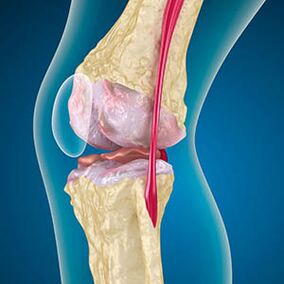
Swelling is caused by soft tissue injuries, tendon inflammation and joint bag.The appearance of heat in the knee, swelling indicates the accumulation of inflammatory exudate -Arthrosis is often accompanied by bursitis, synovites, tendonitis.
The knee crisis is painless and traumatic.Clinkles and other sounds do not say bones are abrasion.Signs of violation of knee stability -The weakness of one of the muscle control.
The creed caused by bone friction in the bone does not occur at the beginning and end of the amplitude of the movement, but in the middle,Even with passive joint flexion.The joint block is caused by the wear of the cartilage and the tendons, which creates a sense of fixation.Bones with any movement are controlled by the muscles.Its premature reduction leads to an altered direction of bone movement, blocking.
1 degree
The determination of the degree of arthrosis occurs by x -rayrevealing participation in the pathological process of bone structures.Its change indicates that the muscle system has been in an imbalance for 5 to 10 years.As a rule, peopleFor several years they suffer painful pain.
In the first stage of arthrosis, which is detected by accident, there is a slight increase in bone spur.The growths appear in the places of the greater instability of the joint.Usually patients rarely suffer pain or discomfort during movement.
The weakness of some muscles is compensated for the function of others without causing severe spasms and overloads.Running and weight training causes symptoms as the weakened muscles are charged.The weakness (hypotension) of the muscles is associated with harmed blood supply and innervation.
2 degrees
The second stage of arthrosis is considered easy.Radiography reveals significant bone spurs, but cartilage is not affected.The amount of synovial liquid is reduced, but the symptoms of pain appear after a long walk and running, joint stiffness and pain when folding and in the knee position.
X -rays -x -x of the second stage of knee arthrosis:
- the pointed edges of the inter -chrus tuber tubers, where the cross -shaped ligament is attached;
- narrowing the joint gap on the medial side;
- The pointed edges of bone condyles on the medial sides, with less frequency on the side - depending on the development of the deformation of the Valgus or Vary joint.
For the second stage in LarsenThe narrowing of the joint gap in more than 50% is characteristic, but this can only be verified in the dynamics or comparison with a different joint.
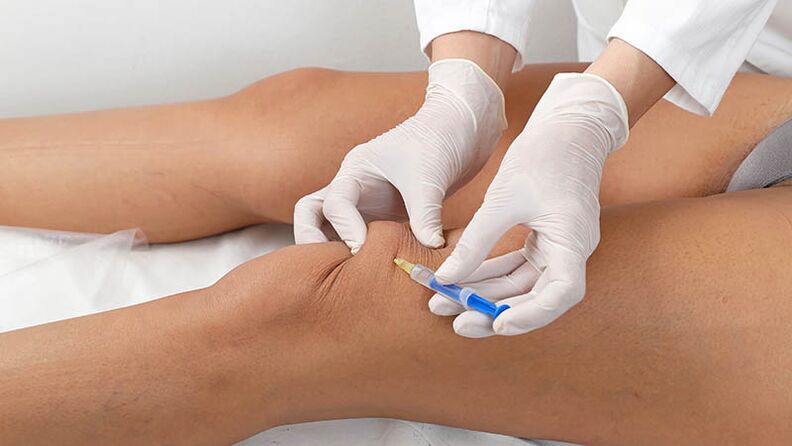
3 degrees
In the third stage of arthrosisThe pain during flexion and the extension of the joint becomes constant.During exacerbation, the joints run and waves, painful pains do not stop at rest.Around the knee, the swelling appears, noticeable deformation of the joint joints.
Signs of moderate knee articulation arthrosis at the third stage:
- The joint gap is significantly reduced;
- the presence of subchondral sclerosis in loaded sections;
- numerous osteophytes on the edges;
- a rare appearance of subchondral cysts;
- Synovites, the appearance of a baker's cyst under the knee;
- irregular surfaces of femoral and tibia, loss of joint joints;
- change in the shape of the patella;
- Calcification and chondomation focuses;
Rarely the fourth stage is complemented by necrotic lesions.Why is arthrosis dangerous?The disease violates the ability to move, creates dependence on others.
Diagnosis
The orthopedic studies signs of edema, palpod the articulation for pain, studies the amplitude of active and passive movement.Necessarily inspects the lumbar spine, becauseThis is where the nerves pass, which provide the function of the thigh muscles.
Radiography shows the presence of osteophytes, a change in space between femoral and tibia bones, which indicates the loss of cartilage in the knee.Sometimes knee joints ray shows significant signals of cartilage wear, but patients do not suffer significant pain.On the contrary, the arthrosis of the first stage can disrupt the function of the kneesince the cause of pain is hypotonic muscles.
If a root x does not show big changes, thenThe doctor prescribes an magnetic resonance imaging of the knee and lumbar joint.The diagnosis visualizes ligaments, tendons and muscles, meniscus to find other sources of pain.
Laboratory diagnosis is necessaryIf you suspect an infectious damage to the joint or gout.
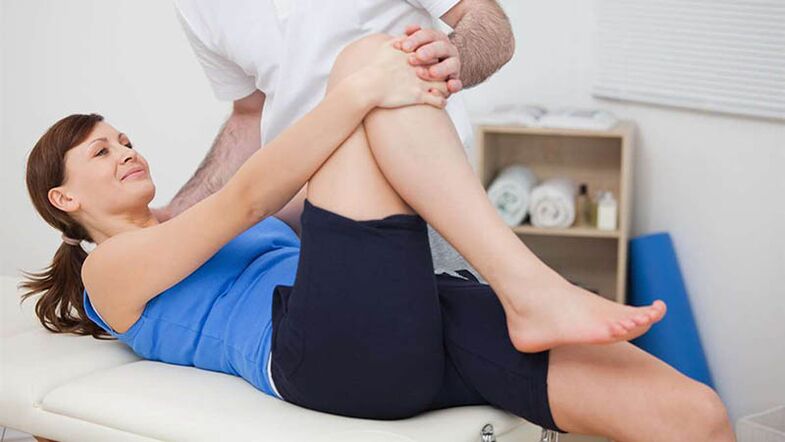
Treatment
Arthrosis therapy must be comprehensiveintended for the cause of the disease.With endocrine dysfunctions capable of affecting connective tissues, appropriate treatment is performed.Overweight patients are recommendedGo to proper nutrition.Exacerbations are removed with medicines.
Drug treatment
Drug treatment of pain consists ofprescription of anti -inflammatory drugs.Anti -I -inflammatory drugs non -esteroids with prolonged useNegatively affect stomach function.
The treatment regime includes chondroprotectors, which only help taking long courses during3-6 months.Pharmacies represent a large number of medicines in this group.
It is believed that the components of these drugs will help regenerate the structure of the cartilage, have a analgesic effect.
Controlled studies were conducted byAnd they concerned complex treatment - arthroplasty, physiotherapy, diet.
Attention!CondoProtectors are drunk in the courses - you can drink a course of a drug and the second course - the other and compare the effect.However, the uncontrolled medicine is not the best idea.Before you start taking drugs, consult your assistant doctor.
How and what to relieve pain and swelling?Intra -articular injections are more popular:
- Steroid drugsInhibits inflammatory reactions at the level of immunological cells, removing acute pain, joint joints and swelling.
- Hyaluronic acidIncreases joint fluid viscosity, reducing friction of joint surfaces.
Important!The effect of drugs is sufficient for 6 to 12 months, but at the same time, degenerative processes do not stop.
Surgical treatment
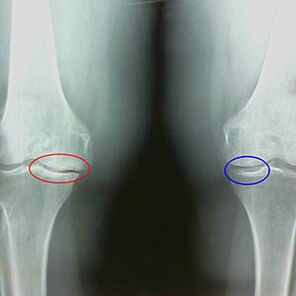
With low effectiveness of drugs, patients receive arthroscopy- A minimally invasive procedure for the removal of bone growth, the joint audit.If necessary, the surgeons perform ligaments and plastic from the cartilage, remove the outbreaks from worn fabric.
Bone osteotomy aims to change the axis of the load in the joint.The doctor cuts the femoral or the berets to change the contact areas of the joint surfaces.The operation is often performed in young patients.
Total replacement of knee joint or arthroplastyIt is necessary at the severe stage of arthrosis (third or fourth degree).Surgical treatment does not always solve the problem as it requires diligent and daily rehabilitation, muscle strengthening.
Knee changes may be compensatory in relation to the pelvis;Therefore, without the restoration of muscle balance, the hip joint suffers below.
Physiotherapeutic treatment
In the physical therapy environment, mud applications, phonophoresis and magnetic therapy are used.The action of external factors is intended forStimulation of blood supply and tissue regeneration, relief of inflammation and swelling.
Treatment with folkloric and non -traditional methods
Popular remedies for the treatment of knee joint arthrosis at home usuallyin order to remove swelling and eliminate pain.Most of the time, the rabban leaves and the potato porridge are used, sometimes mixing and vodka for compresses are mixed.
It is impossible to completely stop degeneration.You can affect kidney exchange using celery juice.The kidneys are associated with the iliac-luxury muscle, which is associated with hip joint pathologies.Normalization of gallbladder and liver function improves knee condition.
The methods for treating the early stage of the early stage of knee arthrosis include anti -inflammatory herbs decoctions:Chamomile, St. John's Herb, Immortality.Ground waste, sea salt and kerosene are used.Baths with magnesium salts, pine infusions are used.
Manual Therapy and Massage
Manual therapy for knee joint osteoarthritis help, if an expert understands the only muscle imbalances.Muscle tests help find weakened muscles that stabilize the knee, determine the cause of dysfunction and eliminate it.
The source can be not only the joint block in the lower back,but also dysfunctions at the level of blood supply, internal organs, endocrine and biochemical failures.Therefore, the manual therapist must have osteopathy skills, applied kinesiology to influence many factors.
Massage is an auxiliary tool for manual therapy, Auto -Help.A patient with knee joint arthrosis may independently knead the muscles tendons that control limb movement:
- the area around the great gluteus muscle;
- lines on the front surface of the thigh - from pelvis to patella;
- The lateral surface of the thigh of the great balance to the thigh condyles;
- The groin area along the inguinal ligament;
- The inner surface of the thigh (along the main channel line).
The massage is performed on site without much pressing.
Therapeutic gymnastics
The cause of arthrosis is the weakening of muscles caused by problems in the lower back, basin and abdominal cavity.Perform exercises for the prevention of arthritis and arthrosis of knee joints for the elderlyIt is possible to increase strength, but not the tone.
Without working on the factors of its weakening with the help of manual therapy, it is difficult to get a complete restoration of biomechanics.Yoga also deprives the joints of stability.Among the treatment methods, it is better to preferPilates and Scandinava Walk.
Diet
The food is adjusted, first and foremost, to combat overweight.It is important to abandon sugar and simple carbohydrates, Add products with fiber, magnesium, group B vitamins and calcium with knee joint arthrosis, which are important for muscle activity.To tryDelete dairy productssince almost 80% of the population has lactose intolerance.
Prevention of knee joint arthrosis
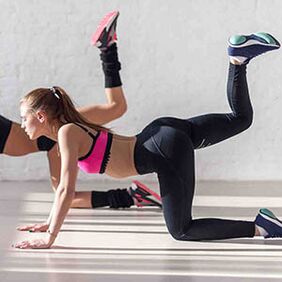
Attempts to strengthen muscles do not always helpsince innervation and blood supply are not restored.The function of the hip muscles depends on the lumbar plexus.
Changes in the lumbar region associated with abdominal muscle weakness also affect the knees.Therefore, in men with a “beer belly”, arthrosis is more common, as in women after multi guide, various genres with diastasis - a weakening of the abdominal wall muscles.
Operations in the pelvis and internal organs form adhesions that affect the vertebrae of the lower back, violating the innervation of the muscles around the knee.
Which doctor comes into contact with knee joint arthrosis?The diagnosis will help make an orthopedistWho will insist on the operation.The best results are provided by the work of multidisciplinary teams in rehabilitation centers.
The best that can be done for the joints:Eat right, monitor the weight, walk more, visit a massage therapist or osteopath once every three months.
TREATMENT REVIEWS
Positive revisions can only provide comprehensive treatment of deformed knee joint or gonarthrosis arthrosis.Anesthesia, intra -articular injections act temporarily, suppressing a natural inflammatory reaction.
Conclusion
The problem of arthrosis is that drug therapy temporarily eliminates only pain syndromes.The reasons are left without identification and influence.Ergotherapists who teach you to live with knee joint arthrosis can help and how to use a sugarcane correctly.But the service is available only in private clinics that perform rehabilitation.























